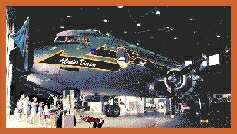|
11. 16 The Geneva Conference on Disarmament
In August 1959, the Congressional joint committee
on Atomic Energy stated that any attack of this sort on the U.S.
would kill millions of people, badly injure millions more and destroy
crops. If the U.S. were to retaliate it could cause the same kind
of destruction on the USSR In other words, both the U.S. and the
USSR were maintaining a dangerous balance of power or terror in
the world. The negotiations between these countries for disarmament
always broke down. Both the countries continued with their nuclear
tests. In 1958, Khrushchev began pressing for another conference
with the U.S. on disarmament. The Conference in Geneva (1955)
led to no agreements. One of the reasons for this was the question
of the status of Berlin. Khrushchev gave a notice to the U.S. that
in 6 months time, he would sign a separate peace treaty with the
East German government and give the Russian Region of Control in
Berlin to East Germany. This region was a 110-mile corridor through
which west Berlin acquired its supplies. The US opposed the stand.
Khrushchev wanted a conference to resolve the issue. But the U.S.
agreed on a meeting of foreign ministers at Geneva (1959). Here
too, the delegates could not reach an agreement.
Finally, Eisenhower invited Khrushchev to the U.S. for a meeting. At the Presidentís weekend camp - Camp David in Maryland mountains, Khrushchev and Eisenhower held long private talks. Finally Khrushchev agreed to drop the deadline to resolve the Berlin problem but did not make any other concessions on the question of missiles.
In March 1960, delegates from both countries met once again at Geneva to discuss the question of disarmament. Both sides failed to reach an agreement.
Later, when Kennedy took over the reins of the
government, he agreed to meet the Russian leader Khrushchev in Vienna
in June, 1961. At this meeting, Khrushchev informed Kennedy that
the USSR had decided to sign a peace Treaty with East Germany in
December that year. By this Treaty, the question of access to west
Berlin would then be in the hands or control of the East German
government. At this, Kennedy firmly held that the right of the United
States, Britain and France on the region of West Berlin rested due
to their victory in World War II. Though Kennedy was prepared to
negotiate, he was not ready to make any concessions to Russia. To
the American public he declared: "... We cannot and will not
permit the communists to drive us out of Berlin either gradually
or by force."

Exhibit 11.6
Essential articles being air-lifted to Berlin
But the USSR, in August 1961, walled off East Berlin from the western part of the city so as to prevent an exodus of refugees from the communist rule in the East. In the following months, tension built up between the 2 countries to such an extent, that the U.S. began gearing up for another war. Later, next year the tension eased, but the controversy continued to smolder till the 1980s when the wall was brought by the East German people.
Throughout the late 50s and the early 60s International Common Markets and groupings of various countries with similar economic interests were established in all continents. In Europe, the main common markets formed were the European Community (EC), the European Free Trade Association (EFTA) and the Coalition of Communist and Socialist countries in Europe called the Council for Mutual Economic Assistance (COMECON) formed in 1949. Further, the Central American common market was formed but broke up in the 1980s. It was called the Central American Common Market (CACM). Then, the Latin American Free Trade Association (LAFTA) was set up in 1961.
1968 saw in the U.S. the assassination of the legendary black leader Martin Luther King and later the Presidential candidate, Robert Kennedy. Earlier the daring and brutal assassination of President John F. Kennedy at Texas, shocked not just the U.S. but the entire world.
The very next year 1969 saw anti-war feeling and protests against the war in Vietnam, held in several parts of U.S. At the same time the U.S. created history by sending Neil Armstrong on the moon. Apollo 11 landed on the Moon and Neil Armstrong became the first man to walk on the moon. Television pictures of the historic walk on the moon were relayed to the earth for millions of viewers.

Exhibit 11.7
The Apollo 11 logo
[Next Page]
|